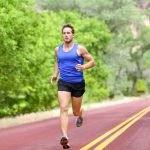Be Prepared for Acute Opioid Overdose: OTC Naloxone in 14 states
Naltrexone and Naloxone: Current Marketed Opioid Antagonists
The other day a conversation in a community clinic centered around the use of opioid antagonists in both acute overdose, and also treatment management. Currently, there are 2 primary opioid antagonistic agents being marketed for these purposes: naltrexone and naloxone. Both of these agents competitively antagonize opioid receptor sites to either displace opioids that are currently affecting physiology (acute overdose), or keep opioids from binding to sites as a way of deterring drug use. The main difference between these 2 agents is the duration for which they are effective.
The Half-Life of Naloxone vs Naltrexone
The half-life of naloxone is much shorter than naltrexone – only 0.5 – 1.5 hours when administered Subcutaneously, intramuscularly or by IV. Naltrexone, on the other hand has a IM half life of 6-10 days. This accounts for the use of naloxone as an emergency response agent, commonly administered by paramedics and EMTs or practitioners who have contact with street populations. The typical dose for acute overdose is 0.4 – 2mg with possible repeated dosing every three minutes up to 10mg (in which case other causes of respiratory failure should be considered likely). Depending on the type of opioid suspected, dosing may need to be re-administered to prevent rebound intoxication.
Naltrexone’s Other Uses
Naltrexone, on the other hand has a larger therapeutic window, and potential uses. With an oral half life of between 4 and 13 hours (depending on naltrexone derivative), dosing ranges from 50mg to 150 mg depending on length of effect desired. IM dosing sustains affects for up to 4 weeks, and is commonly used in drug treatment and rehabilitation programs. Naltrexone is also used off label in low doses – 1.5 – 4.5mg for a host of autoimmune and inflammatory conditions, such as Crohn’s disease, rheumatoid arthritis, fibromyalgia and others.1
14 States Allowing OTC Purchase of Naloxone
Currently, 14 states allow for over the counter purchase of naloxone, in an effort to give access to this life saving measure to patients who choose to abuse opioids. Massachusetts, Rhode Island, Arkansas, California, Minnesota, Mississippi, Montana, New Jersey, North Dakota, Pennsylvania, South Carolina, Tennessee, Utah and Wisconsin.
Naloxone Kits Reversed 27,000 Drug Overdoses
Over 50,000 people die every year in the United States from drug overdoses. It is estimated that between 1996 and 2014, naloxone kits reversed 27,000 drug overdoses. Having access to these medications, and advocating susceptible populations to have these life saving agents, could help prevent many needless deaths.
Source:
1) Younger J, Parkitny L, Mclain D. The use of low-dose naltrexone (LDN) as a novel anti-inflammatory treatment for chronic pain. Clin Rheumatol. 2014;33(4):451-9.
 Node Smith, associate editor for NDNR, is a fifth year naturopathic medical student at NUNM, where he has been instrumental in maintaining a firm connection to the philosophy and heritage of naturopathic medicine amongst the next generation of docs. He helped found the first multi-generational experiential retreat, which brings elders, alumni, and students together for a weekend campout where naturopathic medicine and medical philosophy are experienced in nature. Three years ago he helped found the non-profit, Association for Naturopathic ReVitalization (ANR), for which he serves as the board chairman. ANR has a mission to inspire health practitioners to embody the naturopathic principles through experiential education. Node also has a firm belief that the next era of naturopathic medicine will see a resurgence of in-patient facilities which use fasting, earthing, hydrotherapy and homeopathy to bring people back from chronic diseases of modern living; he is involved in numerous conversations and projects to bring about this vision.
Node Smith, associate editor for NDNR, is a fifth year naturopathic medical student at NUNM, where he has been instrumental in maintaining a firm connection to the philosophy and heritage of naturopathic medicine amongst the next generation of docs. He helped found the first multi-generational experiential retreat, which brings elders, alumni, and students together for a weekend campout where naturopathic medicine and medical philosophy are experienced in nature. Three years ago he helped found the non-profit, Association for Naturopathic ReVitalization (ANR), for which he serves as the board chairman. ANR has a mission to inspire health practitioners to embody the naturopathic principles through experiential education. Node also has a firm belief that the next era of naturopathic medicine will see a resurgence of in-patient facilities which use fasting, earthing, hydrotherapy and homeopathy to bring people back from chronic diseases of modern living; he is involved in numerous conversations and projects to bring about this vision.










